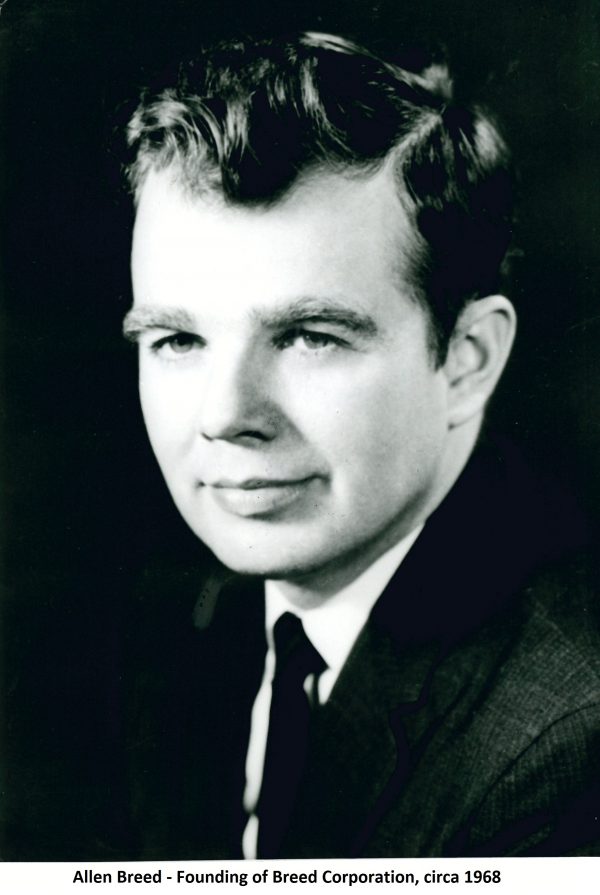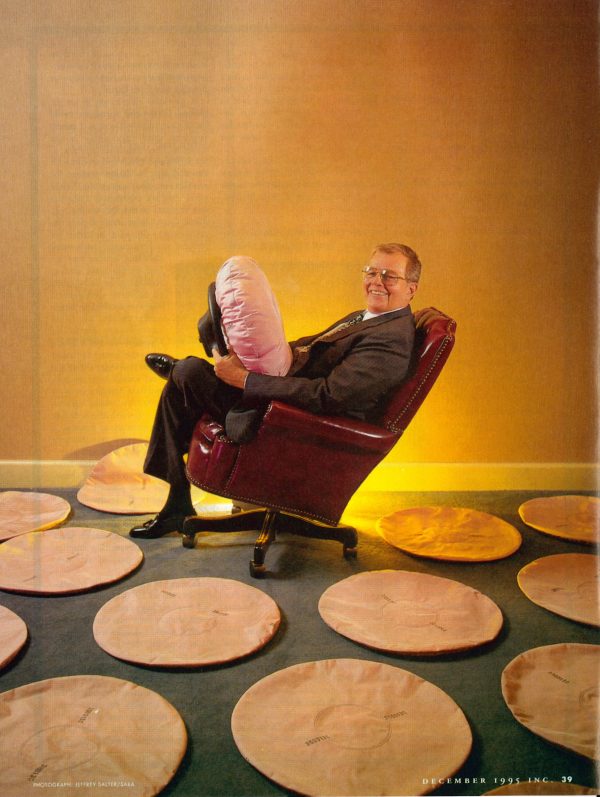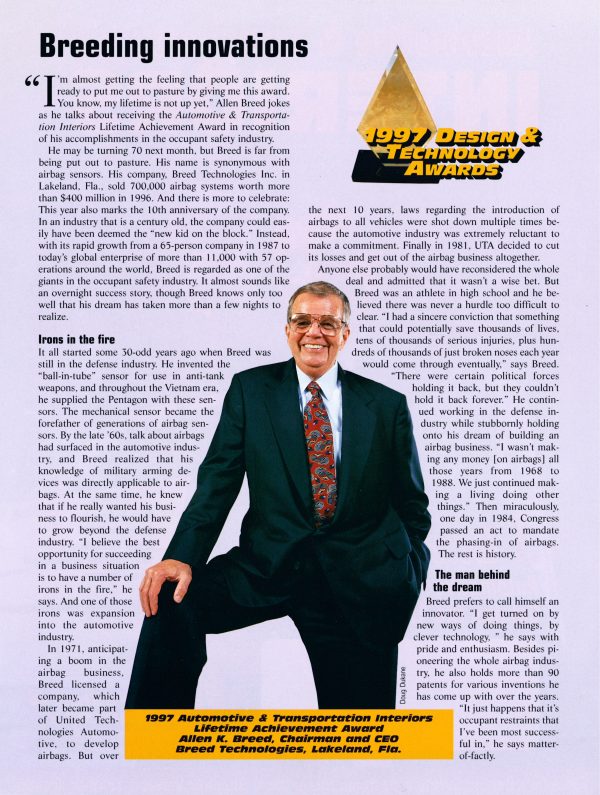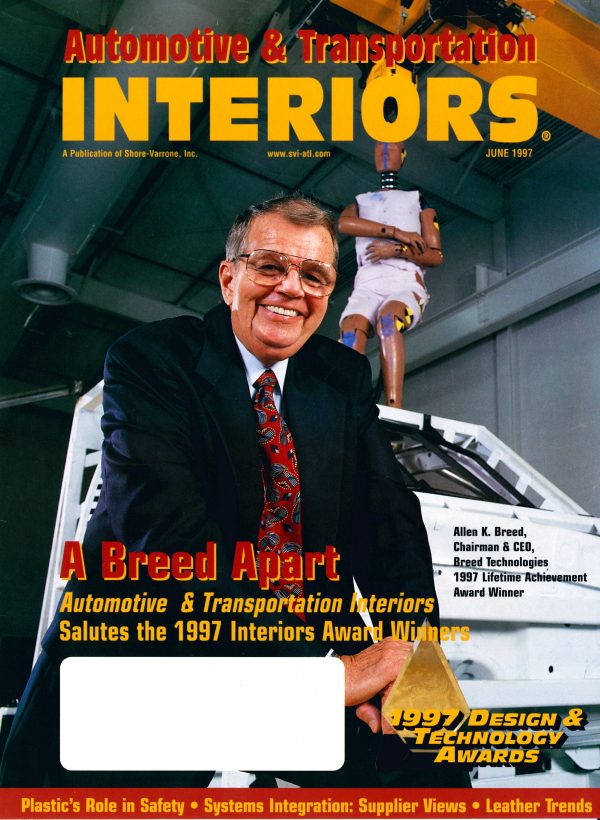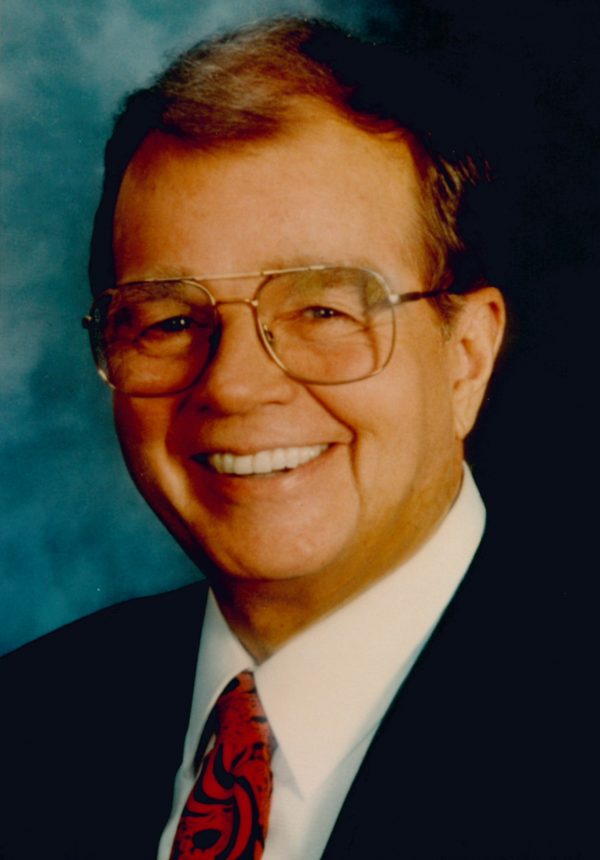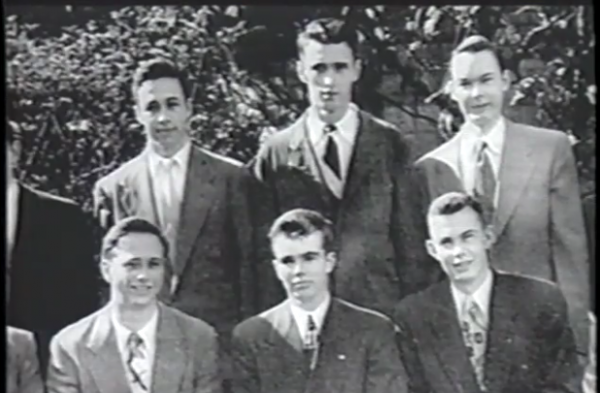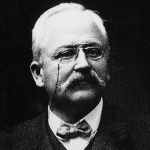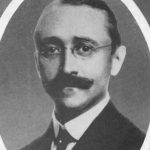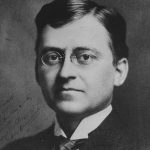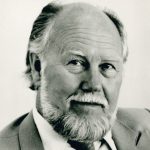Allen K. Breed championed airbags despite resistance from major automakers. His perseverance and foresight changed the automotive industry’s acceptance of life-saving automotive safety features. Over many decades beginning in the 1960s, Breed developed numerous improvements to airbags, enabling the technology to become universally accepted.
Breed was born in Chicago in 1927. He earned a bachelor’s degree in mechanical engineering from Northwestern University in just over two years. He accomplished this by doubling his course load and leaving a tape recorder in one classroom while attending lectures in another. In the years following World War II, he worked as a manufacturing-design engineer for RCA. In 1956, he launched a joint venture turning Waltham Watch, a gear maker, into a defense contractor. He later brought in partners and went public, but lost control of the company after disagreeing with majority shareholders. He left the company in 1961.
Breed then formed Breed Corporation to design timing devices for the military. By 1967, Breed had entered the market for air bags and became their tireless champion despite opposition from Detroit auto manufacturers. On the back of an envelope, he sketched a new air bag design that would reduce manufacturing costs by 30 percent. One month later, a new prototype was ready, featuring a ball-in-tube sensor device that could detect a collision and activate an airbag within 25 milliseconds.
In 1965, Ralph Nader (2016 Automotive Hall of Fame inductee) published “Unsafe at Any Speed,” which speculated that seat belts and air bags together could prevent thousands of car accident deaths. In 1966, the U.S. Congress passed the National Traffic and Motor Vehicle Act, which required automakers to put seat belts, but not airbags, in every car they built. The law did not require people to use seat belts and only about 25 percent of people used them. Airbags seemed like the perfect solution to this problem, but industry acceptance was still difficult.
By the mid-1980s, Breed had started to receive small orders from General Motors, Chrysler and Ford. Finally, in 1984, the U.S. Department of Transportation ruled that passive restraints would be made mandatory for new automobiles on a gradual basis. This resulted in the large-scale birth of the airbag industry, with Breed Corporation as the only supplier in the world with sensing technology for automotive safety systems.
In 1991, Breed co-patented an airbag that vents air as it inflates, decreasing the risk of secondary injuries by reducing the inflated bag’s rigidity. This device is just one of more than two dozen auto safety inventions that Breed co-patented over the years. He continued to oversee the improvement of auto safety mechanics and design, including the successful introduction of side impact airbags.
On September 1, 1998, the Intermodal Surface Transportation Efficiency Act went into effect, requiring all cars and light trucks sold in the U.S. to have airbags on both sides of the front seat.
Breed, who became Chairman Emeritus of Breed Automotive in 1997, remained active in the engineering community, serving on the Advisory Council for the Robert R. McCormick School of Engineering and Applied Science of Northwestern University, where he also received an honorary Doctor of Laws degree. He was a member of the Motor and Equipment Manufacturers Association’s Automotive President’s Council and the Society of Automotive Engineers.
Breed’s company, now known as Joyson Safety Systems, is a global leader in the design, development, and manufacturing of automobile safety components. Breed passed away on December 13, 2000 at the age of 72. Forever remembered as an optimist, Allen K. Breed often said, “When something is basically good, you can suppress it for a while, but you can’t kill it.”

